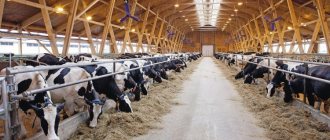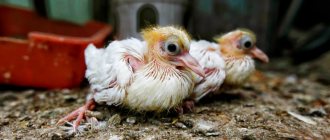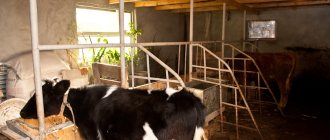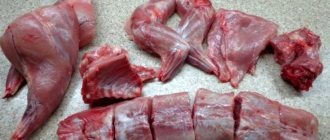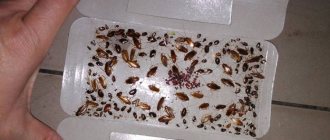Guinea fowl begin laying eggs at the onset of puberty. This period falls at the age of 6-8 months. If there are only females in the enclosure, then the eggs will be unfertilized. They are called canteens and are eaten. To hatch chickens, fertilized eggs are needed for hatching. To obtain incubation material, a parent stock is created. It consists of 4 females and 1 male.
The herd is kept separately from the main stock. For individuals, it is recommended to change the diet by adding protein food and mineral fillers. These activities will allow you to subsequently obtain high-quality material from which healthy offspring will appear. How to hatch guinea fowl in an incubator?
What it is?
The term is translated from Latin as “to hatch”, “to endure”. This is a natural development process from the moment the egg is laid until the individual emerges. Incubation takes place at given environmental parameters: a certain temperature, humidity, lighting . To breed guinea fowl at home or on an industrial scale, an incubation cabinet is required. It must have a thermometer, heating and lighting system.
Primary requirements
There are a number of specific requirements that must be observed during incubation. Initially, you need to be able to choose the right eggs, because not all of them are suitable for future breeding of chicks. There are also some requirements for the incubator.
Egg quality
Normally, a guinea fowl lays eggs for six months, but if you provide it with good lighting and maintain a constant temperature, this period can increase to 8-9 months. It will be possible to hatch offspring from 70-80% of eggs, divided into several categories: small, medium, large.
The main requirement is to choose eggs of the same size. That is, you cannot put medium and large, or small and medium eggs into the incubator at the same time. Other requirements are practically no different from those for breeding other birds:
- Choose whole and pre-disinfected eggs. Typically, farmers use a quartz lamp for irradiation. At home, it is permissible to use a weak solution of potassium permanganate or an alcohol solution of iodine. After this procedure, the eggs are rinsed with warm water and wiped dry. Eggs are collected in the morning until 10-11 o'clock.
- Eggs must meet the standard: pear-shaped, sharp end, free from unevenness and defects.
- Immediately at the moment of laying the eggs in the incubator, it is necessary to first hold them at room temperature (several hours) - this promotes gradual heating.
- Eggs are taken only from females that are at least 1 year old. For this reason, collection begins no earlier than May.
- It is advisable to take those eggs that the guinea fowl will lay no earlier than three weeks from the start of laying. The reason for this is that the first eggs are often unfertilized.
- Eggs are selected according to typical parameters: very small ones and overly large ones are laid aside. You can find out about the presence of an embryo in an egg using an ovoscope to check.
Requirements for the incubator
Within 28 days, it is necessary to provide the eggs with temperature and humidity conditions. If you deviate even slightly from the schedule, the embryo may freeze. The network device must be equipped with a battery, which will be switched to in case of power outages.
The humidity in the chamber must be maintained by the evaporator and automation; the readings of the wet and dry thermometer must be under control. The incubator must also provide protection against overheating. Even if the temperature rises even for one minute, the entire brood may die. A prerequisite is regular air exchange in the thermostat; there are holes in it, through which air circulates.
When incubating guinea fowl, each egg releases 3.5 liters of carbon dioxide and absorbs 4 liters of oxygen. If the incubator provides for automatic turning of trays with eggs, the poultry farmer must ensure that they are installed with the blunt end up. When turning eggs by hand, lay the eggs on their side.
Selection and storage of material
For incubation, it is recommended to take eggs from a female whose age is from 7 to 9 months. Permissible weight – 40-45 g, safe storage period – no more than 10 days. Eggs should be stored in an upright position, with the blunt end facing up. Before selection, the guinea fowl needs to be heavily fed (given wet mash with fish and meat waste). Before laying, each egg must be candled and checked.
IMPORTANT : It is recommended to take eggs of the same mass to create identical incubation conditions and the simultaneous appearance of chicks.
How to choose eggs for incubation (criteria, norms, weight, sizes)
To begin with, it is worth noting that the guinea fowl reaches sexual maturity at 9 months. From this time on, the bird can lay eggs, which in the future are recommended to be placed in the device. If you create the necessary conditions in farming, you can get guinea fowl eggs in just six months.
If the conditions for keeping the birds are inappropriate, they will lay eggs where you may not find them.
Guinea fowl eggs
The eggs of these birds can be stored for incubation for a long period. Their weight should not be less than forty grams, and their shape should be oblong. Based on the color of the shell, it is recommended to select eggs that are light brown or slightly reddish with small inclusions. Moreover, the shell must be particularly hard and free from cracks and other grooves.
To prepare for incubation of guinea fowl eggs, it is necessary to select exclusively clean eggs. They are carefully laid with the sharp end down and stored for seven days in a special room. It should be cool and dark, with no direct sunlight on the eggs.
To select really high-quality eggs for incubation, you need to carefully examine each one under a magnifying glass. An ovoscope can also be a reliable assistant in this matter. Thanks to this device, you will see the finest grooves and notches on the shell, which were completely invisible before. It is through such microcracks that moisture will subsequently evaporate, which is so necessary for the healthy development of the embryo.
Professionals know that small scratches can be covered with a starch adhesive mixture.
Signs of unsuitability
Which eggs are not suitable for incubation? It is important to pay attention to the following indicators :
weight less than 35 g;- deformed shape;
- there are noticeable defects on the shell (cracks or growths);
- blood impurities are visible inside;
- there are 2 yolks in an egg;
- contamination (if the area of the dirty shell is more than 50%, the egg is usually not taken).
Selected eggs must be stored in accordance with temperature, humidity and lighting conditions. The room should not be exposed to sunlight and the humidity level should be at least 80%.
Ways to increase humidity levels
If a poultry farmer initially acquired an expensive, programmable incubator, he will not have any difficulties setting the desired humidity, temperature, and number of egg turns per day.
But if the incubator model is old, you will have to try a little. To increase humidity, it is recommended to spray the eggs. But this is only if there is an external fan. But for spraying you will have to open the incubator.
If the model is semi-automatic and has a built-in fan, it is dangerous to spray the eggs, because water can get into the electrical system. Then you just need to insulate the incubator, isolating it from the environment. But, one way or another, raising the humidity to 80% will not work.
Homemade incubators that do not have an automatic detector, humidity is calculated from the table, taking into account the temperature difference between the dry and wet thermometer. A wet bulb thermometer has a cloth wick wrapped around the bottom tip. The second end of the wick is lowered into a container of water.
If the incubator is quite large, you can increase the humidity in it by installing a container of hot water. But at the same time, the temperature will rise, which can negatively affect the chicks.
Preparation for bookmarking
Before laying the eggs, you need to keep them in a warm room for 2-4 hours (this will allow them to warm up). You can’t put them in the trays right away; you need to wait until the device heats up to the desired level (usually 38 degrees). When laying, it is important to separate small from large eggs and place them in different containers. Contaminated specimens must be cleaned.
Disinfection
This is necessary to eliminate the dangerous microflora that develops on the shell (penetrating inside, it harms the embryo). On farms, eggs are disinfected with formaldehyde vapor. For private breeding, a regular iodine solution or chloramine is suitable.
To wash or not to wash?
Not all farmers approve and carry out washing, since wet shells are an ideal place for the development of fungus and various pathologies . If you decide to wash eggs, use special antiseptics. These are Virocide, Monclavit-1 and others.
An alternative is 1.5% hydrogen peroxide or potassium permanganate. The temperature of the products should not be higher than 30 degrees, the soaking time should be 3-5 minutes. After soaking, take out the egg, then use a toothbrush to remove all dirt (dried feathers, droppings). Next, the egg is placed on a clean surface until completely dry.
Selecting chicks to create a flock
The larger the eggs were when they were placed in the incubator, the stronger the offspring will be. For rearing, guinea fowl are selected from the brooder after birth, 8-12 hours later. At this time, a standard chick can already stand firmly on its feet and respond to tapping on the box. The strongest chicks are left to form a parent flock and continue the family line.
If the number of healthy chicks is 60-65% of all eggs laid in the incubator, this is a normal indicator. The optimal value can be obtained by laying the eggs of those birds whose age ranges between two years.
Periods of embryo development
Embryo development occurs in 4 main stages. Throughout the growth of the embryo, it is important to regularly scan the contents (use an ovoscope).
On the 5th day, a reddish spot with pronounced pink borders is visible in the center. The circulatory system is formed.- On day 7, a network of blood vessels is formed.
- After 2 weeks, the embryo is visible as a spot of rich red color.
- On days 25-27, the chick occupies ¾ of the internal volume of the egg. The wings, bite and paws are finally formed.
How does hatching happen?
Birds are bred like any other poultry, only in favorable conditions. If bird embryos are kept in a cold nest for a long time or are not warmed up evenly, it will not be possible to produce healthy young animals. The time spent on breeding birds pays off with tasty meat and healthy eggs, which are used during a therapeutic diet. This meat product is suitable for people with gastrointestinal diseases and various allergic reactions.
Birds are bred on small farms and private farmers, who treat each type of domesticated bird with the utmost responsibility. To organize the incubator mode for birds, you will need special settings. Before loading the clutch, eggs can be stored for several days in a cool room. It is best to make clutches from eggs collected at one time. Storing testicles for a long time is unprofitable and dangerous. The laying scheme (the mode of heating guinea fowl eggs) is calculated in advance, taking into account the exact number of eggs and the time it will take for the young to hatch.
What is the difference between the time and conditions for incubating eggs of guinea fowl and chickens? Externally, the testicles of different breeds of birds are similar. A common mistake made by inexperienced farmers is the incorrect mode of the device. You can try to heat the clutch like chicken eggs, but due to such rash actions, most of the brood may die
Keeping the poultry is just as important as organizing the work of the incubator (bringing guinea fowl to the incubator during the incubation time). Proper care and an individual approach will help the farmer to significantly increase the number of poultry in a few months
What is the difference between chicken and guinea fowl products? The main distinguishing features of the two different processes for hatching guinea fowl in an incubator are as follows:
- egg size;
- shell thickness;
- time of natural incubation of eggs;
- features of the body structure of chicks of different breeds.
The difference between the size and weight of the testicles of 2 similar breeds is small: only 10 g, but it is precisely this nuance that determines the temperature regime that needs to be set in the incubator. The thickness of the shell affects the temperature of the embryo inside the testicle. You can set the temperature inside the incubator to average, but this will not ensure complete heating of the future young animals. Chicks hatch much later (guinea fowl take a week longer to hatch) than chickens, so the timing also changes significantly.
It is possible to lay eggs of different breeds at the same time, but you will have to monitor the mixed clutch especially carefully. Saving on resources does not always pay off with good results. After a month, chicken chicks begin to be born without a change in temperature. Laying a clutch of eggs from different breeds is risky.
Incubation of guinea fowl, features of guinea fowl eggs (2016)
Incubation of turkeys, guinea fowl and chicken eggs Part 1
The guinea fowl incubation was completed successfully. Features of incubation during hatching of guinea fowl.
The longer the females sit, the slower the eggs dry out. When setting the mode in the incubator, the farmer must take into account the average time during which a full-fledged chick will form from the yolk. Ventilation of the system is an important process that will keep the eggs cool. After how many days can the brood be delivered? The incubation mode for guinea fowl (guinea fowl in an incubator at full hatch) is selected according to a ready-made scheme.
All about incubators
It is important to maintain the correct moisture and temperature conditions in the device. A thermostat is used for this. The incubator must have a battery to control the voltage (will provide protection against power surges, overheating or freezing of embryos). An evaporator will help maintain the desired humidity.
ATTENTION : There must be constant air circulation in the incubator - for this purpose special holes are made in the walls.
Farmers distinguish between several types of incubator cabinets:
- The first includes household ones - these are small boxes that can hold up to 110 eggs. Technical indicators are identical to those of other devices, hatchability of chicks is 90%.
- The second type is farming . They allow individuals to be bred cyclically and can hold up to 1000 eggs. The downside is the death of all embryos due to failures and breakdowns.
- The last type is industrial . These are fully mechanized devices that are used on large poultry farms.
You can read about making your own incubator here.
Ripening time
For guinea fowl eggs, the incubation period is 26-28 days. This period is 7 days longer than that of chickens. During this time, the guinea fowl egg loses up to 15% of its initial weight. After the chicks appear, their strict selection is important: preference should be given to strong individuals.
During the selection procedure, you need to look at the umbilical ring, cloaca, paws - they should be bright orange. The eyes of healthy guinea fowl are bulging, the down is shiny .
Features of the incubator mode
During the first 2 weeks, the temperature in the incubator should be 37.8 degrees, and the optimal humidity level for the period should be 60%. Later, the temperature should be gradually reduced by 1-2 tenths - to 37.6. The humidity level also needs to be reduced (50%).
3 days before the end of incubation, the temperature is returned to the original temperature . If the room does not have automatic humidity settings, a jar of water is placed in the equipment to additionally humidify the air. From the 6th day of hatching, the eggs should be cooled by lifting the incubator lid for 5-6 minutes; from the 14th day the duration increases (open for 10 minutes).
Table of regime and timing at home
Summary characteristics of the incubation regime in private farming
| Day | Degrees (t) | Humidity level | Carrying out embryo control |
| 1 – 12 | 37.8°C | 57—60% | On day 9 |
| 14 – 24 | 37.5 °C | 48% | On day 14 |
| 25 – 27 | 37.8 °C | When pecked - up to 95% | On day 26 |
Step-by-step detailed instructions for the process
Incubation is a painstaking process that requires compliance with a number of rules. Let's look at how many days the Caesar eggs lie in the incubator and what needs to be done :
- Each egg needs to be heated evenly, but it is important to avoid overheating - if the shell is hot, turn on the cooling system.
- Hatching in an incubator involves ventilation. It should be carried out when the chicks begin to breathe (end of 3 weeks).
- On days 5-8, ovoscopy is performed to eliminate unfertilized eggs.
- You need to turn the eggs 2-3 times a day. The first turning is done 12 hours after laying. This is necessary for uniform heating and to minimize the adhesion of embryos to the walls.
- The chicks will hatch in 28 days.
- Individuals grow actively - after 3 months they have the size of an adult.
Watch a video about the features of incubating guinea fowl eggs:
In addition, we advise you to read articles describing the incubation procedure:
- pheasant eggs;
- geese eggs;
- Muscovy duck eggs;
- turkey eggs;
- turkey eggs;
- quail eggs;
- duck eggs;
- peacock eggs;
- ostrich eggs.
Bookmark in the incubator
The incubator should be warmed up before placing the eggs. Planting can be done at any time, but farmers recommend doing it from 5 to 9 p.m. It is important to sort eggs by weight (small - 40 g, medium - 43 g, large - 45-47 g) and distribute them into different trays. You need to start the procedure with large eggs and end with small ones. The total time for manual bookmarking is 4 hours with breaks.
Candling: at what time to do it?
The action is called ovoscopy. The goal is to check the quality of eggs and discard damaged specimens. The biological control procedure is carried out on days 5, 9, 14 and 26. Eggs with a bloody and blurry ring are subject to rejection - signs of embryonic death .
When do guinea fowl hatch, on what day of incubation?
How many days does the incubation process last for guinea fowl? All incubation of guinea fowl eggs occurs within 28 days. After which the chicks are carefully selected. You should leave only healthy and strong ones that can grow and develop normally.
Some chicks need assistance after they hatch. This is the case if they have not hatched for a long time, more than a day.
Guinea fowl chick hatching
Guinea fowl should not be kept in an incubator for a long time after they hatch. After drying, the most energetic ones should be transferred to specially prepared boxes for day-old young animals. Moreover, there should be no more than twenty units.
After approximately three hours, you need to make a further selection, and then another if necessary. The chicks from the first group are considered the healthiest, but the next ones may also turn out to be quite suitable for rearing.
Guinea fowl chicks grow quite quickly. And after one month they are well feathered. And by three months they completely resemble an adult, only smaller in size. By this time, the weight of the guinea fowl is approximately one kilogram.
The most common mistakes
Farmers, not knowing the specifics of incubating guinea fowl, often set them to the same regime as for chickens. This is a mistake, since breeding guinea fowl requires more fine-tuning. Main differences from a chicken egg.
- Different weight. For guinea fowl it is 40-45 g, for chickens it is at least 50 g.
- Different incubation periods (for chickens it is shorter).
- Frequent ventilation of guinea fowl eggs due to the smaller size of the air chamber.
- Differences in shell density.
If there are problems?
There are a number of factors that in one way or another affect the hatchability of guinea fowl and it is because of them that certain problems can arise. Below are tips that can help the breeder increase the percentage of chicks hatched.
The best results in terms of fertility are given by females aged 2-4 years
- Incubation of guinea fowls should take place without violating the regime, so it is worth buying a good device with an additional battery.
- The receipt of a large number of unfertilized eggs is most often associated with poor living conditions of the maternal flock, as well as a lack of vitamins and minerals in the female’s body.
- The best results in terms of fertility are given by females aged 2-4 years. Males are most productive up to 2 years of age.
- Mating of young males with 2-year-old guinea fowls increases fertilization.
Conditions of detention
Any poultry farmer who knows at least a little about the habits of guinea fowl will tell you with confidence that these birds are very nimble and love freedom. Therefore, if you want to provide your birds with complete care, you need them to have the opportunity to walk freely around the yard or in a larger enclosure. Of course, it’s not so scary if you keep your birds indoors. But this can negatively affect their fertility.
It’s great if not far from your house there is a meadow with fragrant, lush herbs, or the edge of a forest. There the birds will be able to get their own food, and you will save significantly on feed. And don’t worry that the birds will get away from you somewhere. If you stick to the feeding schedule, your guinea fowl will return home on time. In addition, the developed feeding regime has other advantages, because under no circumstances should birds be left to their own devices, otherwise they will go wild.
Guinea fowl have a timid, active disposition. In addition, they are very loud. This is probably the only disadvantage of keeping guinea fowl. But any animal can be tamed
And if you pay attention to the birds, they will get used to you, to your voice, and will become calm pet birds. But if someone strange appears in the yard, be prepared for the guinea fowl to start screaming loudly
By the way, it would be unfair to these royal birds if we do not note that guinea fowl are the most cultivated birds of all domestic birds. Even if you release them into the garden, you don’t need to worry about the harvest. Birds will not rake the beds and eat vegetables, but they can help you in the fight against harmful insects and weeds. After all, larvae, worms, and beetles are the favorite delicacy of guinea fowl.
A specially equipped room for keeping guinea fowl is not required. And this is another advantage of breeding these very hardy and unpretentious birds. They will feel great in an ordinary chicken coop, but, of course, a little more space needs to be allocated per individual - for every two individuals there should be 1 square meter. m. Birds can also withstand severe frosts, so it is not necessary to particularly insulate the room.
But you should still take care and make perches so that the birds do not sit on the cold floor. The temperature of the room in which day-old chicks are kept should be about 36 degrees. But by the end of the third week it can be gradually reduced to 25. The temperature requirements for the room in which adult guinea fowl will live are no different from the requirements for a chicken coop. Of course, no one argues that if you have the opportunity to keep guinea fowl in a heated room, then this will only be a plus. Indeed, in this case, fertility will not decrease even in winter.
It is necessary that the floor be covered with dry bedding made from sawdust, straw, or wood shavings, which should be changed every month. In winter, guinea fowl will not refuse to walk, but make sure that they walk on cleared ground and not on snow. The walking area can be covered with straw.
It is important that the room in which the birds are kept is well ventilated. But provided there are no drafts. Otherwise, guinea fowl may get sick
Otherwise, the guinea fowl may get sick.
In winter, you should take care of additional lighting. Turn on the lights at 7 a.m. and turn them off around 10 p.m. Birds lay eggs only in the light, so lengthening the daylight hours is necessary to stimulate egg laying.
You can feed guinea fowl the same as chickens. However, it should be borne in mind that half of the total daily diet of royal birds should be greens, as well as various vegetables, which are probably plentiful in your homestead.
In addition, in winter you need to think about additional feeding of birds with wet mash from sour milk, fish oil, and meat waste. In the evening, give the birds grain and feed, because they are very nutritious and take a long time to digest, so the guinea fowl will not feel hungry throughout the night.
If you decide to equip an enclosure for walking, then keep in mind that guinea fowl fly well, so the height of the mesh for the fence should be at least two meters. To make the birds feel comfortable, plant several bushes in the aviary, and also put up a small canopy. Like chickens, guinea fowl are big fans of digging in the ground, so give them this opportunity by pouring a pile of sand in the walking area. Birds will not refuse ash baths either.
If you follow these simple rules, you will be delighted with guinea fowl eggs all year round.
Guinea fowl breeding
In nature, guinea fowl live in pairs, which is almost impossible to achieve at home. Therefore, they usually keep 4-5 females per male, and during the breeding season, 1 male can cope with 6 females.
As for feeding, the diet of guinea fowls a month before the start of the incubation period is of great importance. Fermented milk products and cottage cheese should predominate in the diet. The following are added as additives:
- chalk, table salt, eggshells;
- fresh herbs;
- food waste (meat, fish);
- cereals.
Video - Breeding and keeping guinea fowl
A comment from a specialist on the peculiarities of keeping and breeding guinea fowl can be seen here.
Embryo control
Control over the development of embryos is a prerequisite, since not all chicks hatch, but about 70-80%, the rest die. If the dead embryo in the egg is not removed in time, bacteria will develop in it, which can cause an increase in internal pressure.
As a result, the shell will crack and the infected contents will spill out - this is unacceptable, since there is a high risk of infection of healthy fruits. Therefore, the development of the embryo must be checked constantly using an ovoscope, at least 4 times during the entire period before hatching:
- On day 5, when viewed, blood vessels are clearly visible, which have a dark red color, contrasting with the main background. In the center there is a distinct red spot with pinkish borders.
- On the 7th day, the blood vessels become much more developed, the central red spot moves upward, acquires clear boundaries and a more saturated color in relation to the main background.
- After 12-14 days, the embryo is already visible - visually it is defined as a dark red spot with grayish tints, which has clear boundaries and contrasts against the main background. If the embryo has died, then the spot has very vague, unformed contours or does not form at all. Such eggs must be removed immediately.
- On the 25th day, a practically formed chick can be seen, which occupies up to ¾ of the entire internal volume. Wings, legs, and beak are visible.
The normal pace of development can also be judged by the decrease in egg mass (in% of the original) - the dependence is reflected in the table.
| Number of days from the start of incubation | Egg weight loss, % of initial |
| 5 | 2,1-2,6 |
| 10 | 4,8-5,1 |
| 15 | 7,9-8,2 |
| 20 | 9,0-11,0 |
| 25 | 11,0-14,0 |
Video - Ovoscopy of eggs at home
You can see clearly how you can enlighten eggs at home here.
Features of the egg-laying properties of guinea fowl
When suitable housing conditions are created, the individual produces up to 120 eggs per year. Their size is smaller than chicken ones, the average weight is 45 grams. The shape of the egg resembles a pear. A special feature is the strong shell (2-3 times the density of chicken shell). This provides protection against the penetration of microbes and the development of salmonellosis.
Why is a shark a fish and a whale or dolphin a mammal?
Guinea fowl eggs are easy to transport . They are stored for a long time (up to 7 months). The shell is colored brown and feels rough to the touch.

